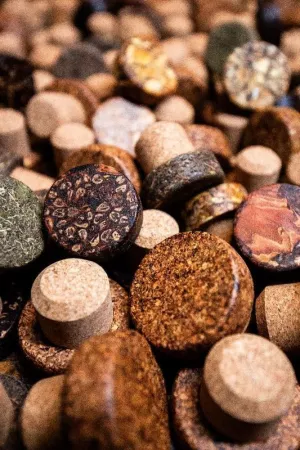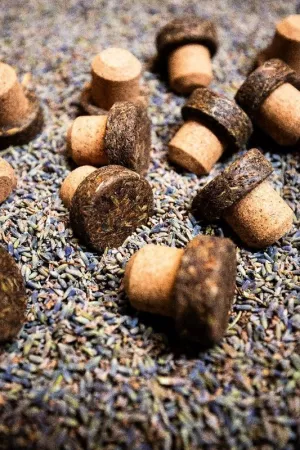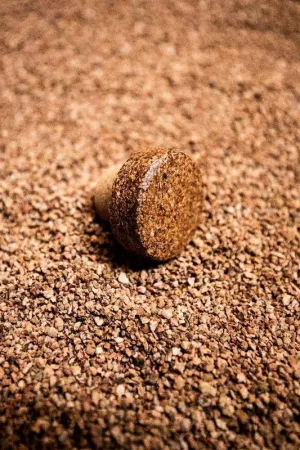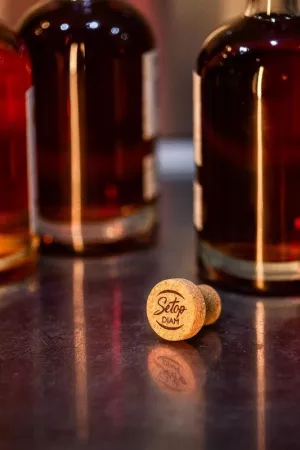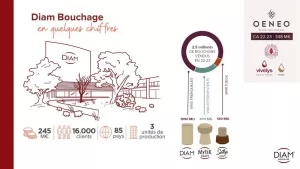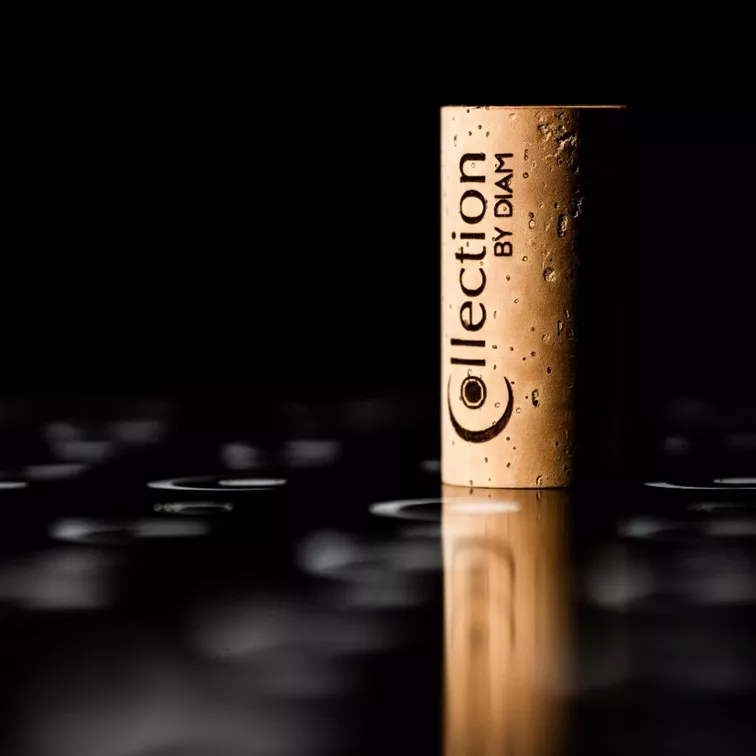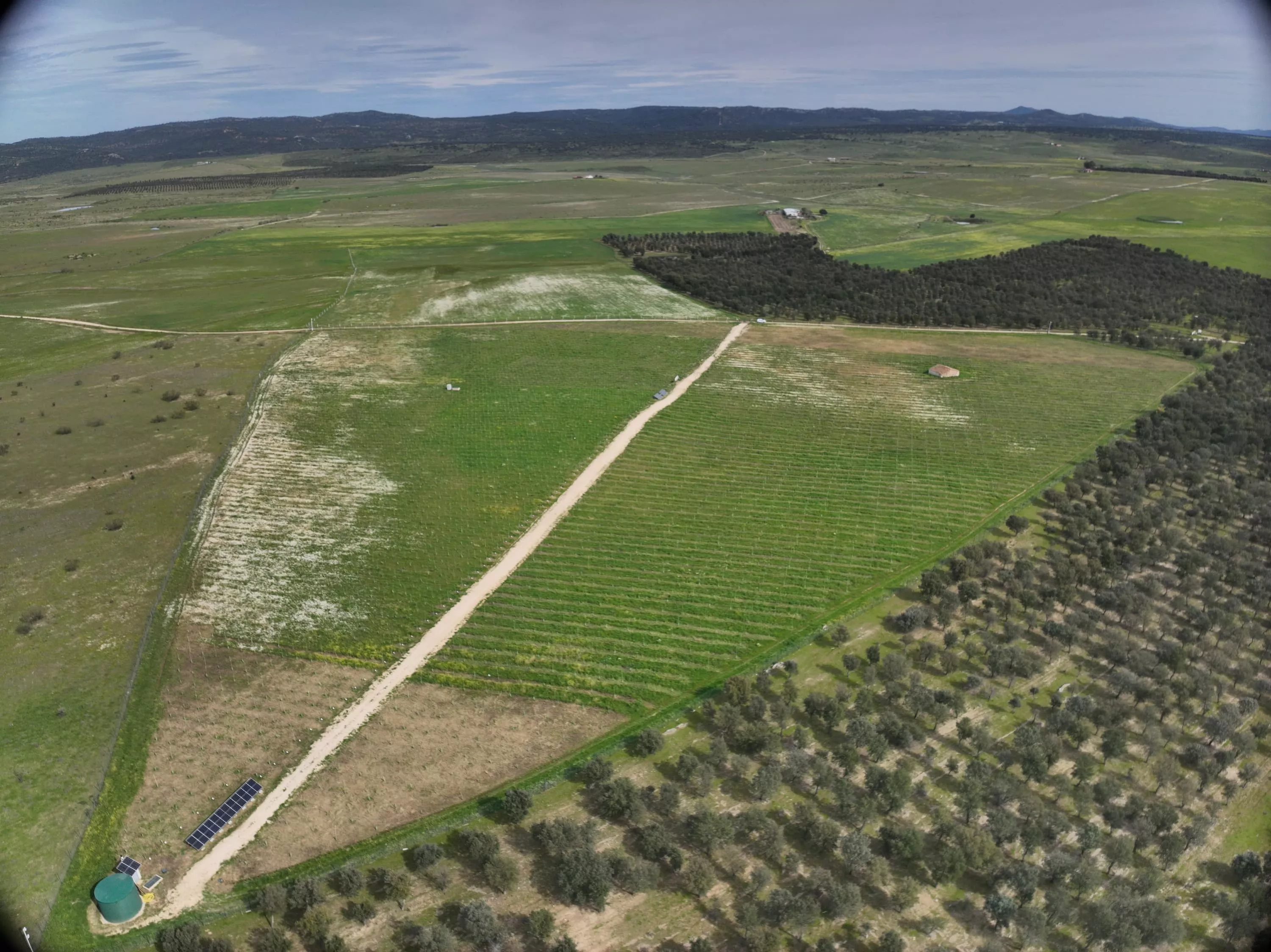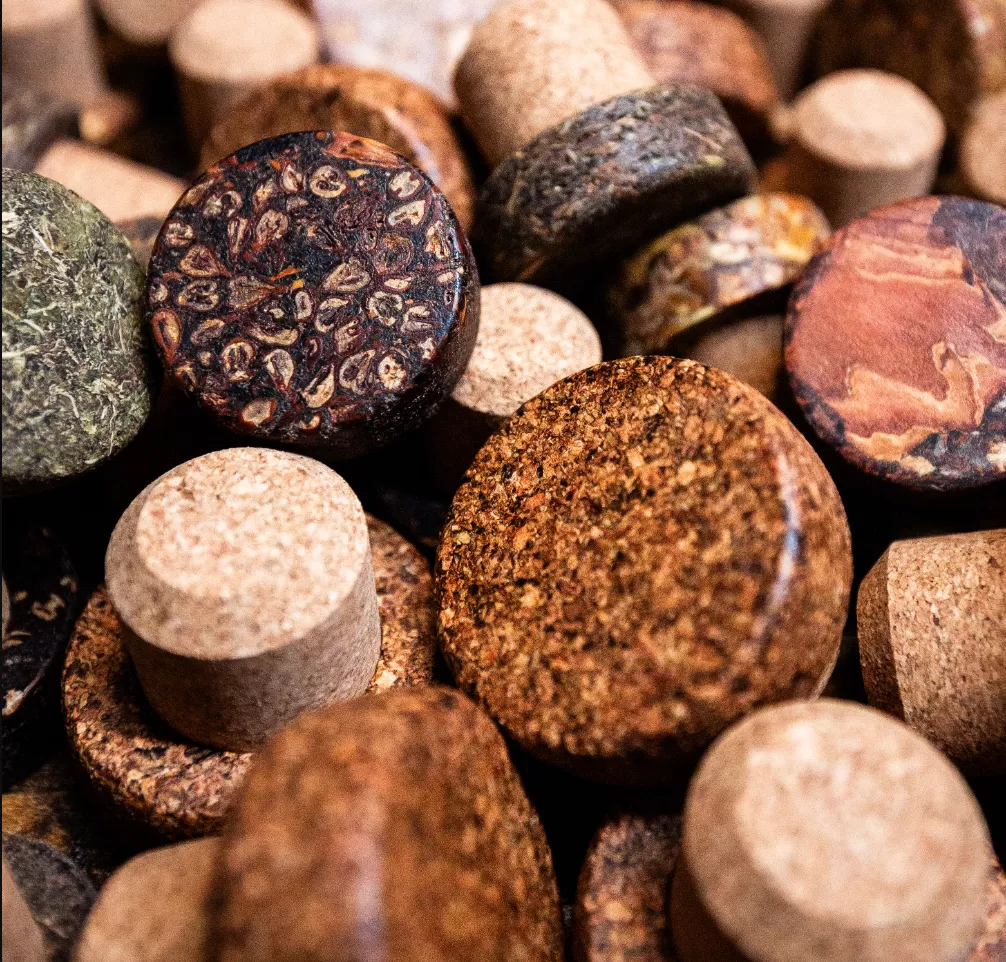
Setop Element: the top cap that overcycles materials from the spirits industry
"With Setop Element, we wanted to respond to the current challenges faced by spirits houses in terms of respect for the environment, differentiation and strong premiumisation". Alexandre Roux, Setop Diam Sales Director
A head that recycles unused materials from the spirits industry
The head, made from materials usually considered to be natural residues from spirits production (whisky draff, apple pomace, lavender, broken wood, etc.), is a real technological, aesthetic and environmental breakthrough.
Apart from the plant-based binder, the materials used are supplied by the distillers themselves, who can thus recycle a raw material that is usually discarded at the end of their manufacturing process. This circular economy philosophy is at the very heart of the Element project.
A body made from biosourced micro-agglomerated cork
Since 2017, Diam Bouchage has been offering a biosourced range for still wines called Origine by Diam. These corks incorporate a beeswax emulsion and a binder made from 100% plant-based polyols. After several months of research, the company decided to apply this technology to its Setop Element products in order to offer its customers an entirely eco-designed cork stopper.
Like the brand's other bio-based closures, the Setop Origine body has been awarded the OK Biobased® label with a maximum 4-star rating. This TüV Austria label guarantees, on the basis of analyses, the organic origin of the carbon contained in products.
Manufacture designed to save materials
The manufacturing process for Setop Element corks is the same, whatever the material used. It begins with a series of specific analyses to determine whether the desired raw materials can be used, depending on the bottle and spirit concerned.
As far as the body is concerned, the manufacture of a micro-agglomerated cork allows the yield of a cork plank to be optimised compared to the industry of traditional cork makers, and allows the use of all the suberin that is often left out during the manufacture of tubed corks.
For the heads, the mixture of natural material and bio-based binder is moulded to measure according to the distiller's project. In this way, the moulds are made to the desired final shape to minimise trimming and therefore the loss of raw material.
An innovation serving the image and history of spirits.
Beyond its environmental benefits, the Setop Element range offers spirits houses a unique and personalised packaging element, right down to the choice of raw material.
"To give meaning to the cork's design, each natural material used to produce the heads is carefully selected to highlight their aesthetic specificity; for example, an ELEMENT cork made from apple pomace will clearly distinguish the seeds from the apple and preserve the nature of this raw material in its entirety", Alexandre Roux.
The possibilities are endless and the research teams at Diam Bouchage work in partnership with each customer to develop their own concept. Each cork is unique, and so is each bottle, to offer end consumers a complete sensory experience when they open the bottle, directly linked to the identity of the product they are about to taste.
"Many of our current projects are confidential, but you can already find two Setop Element corks on the market: the Drêche de Whisky cork developed with Domaine des Hautes Glaces and the Lavender cork created for Mistello du Vadrouilleur's Gin de Provence. We're very proud to have carried out these developments with these innovative houses," says Alexandre Roux.
The Setop Diam guarantee
Like the classic Setop range, Setop Element benefits from the Diam guarantee in terms of sensory neutrality and homogeneity.
Treated using the DIAMANT cork de-aromatisation process, Setop micro-agglomerated cork bodies are guaranteed to be free from releasable TCA (<0.3ng/L). They are also perfectly homogeneous from one stopper to the next, ensuring optimum conservation safety over time.
